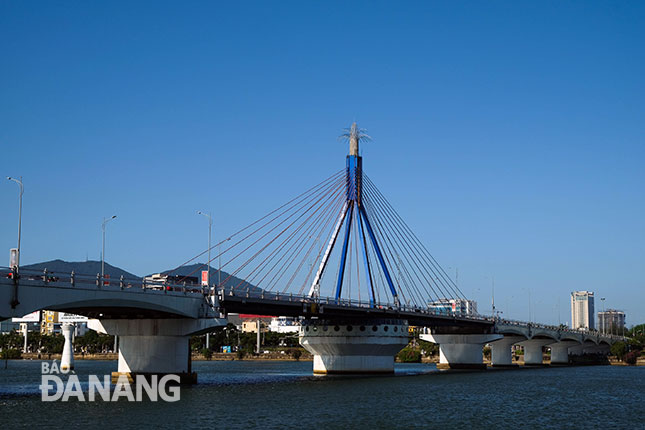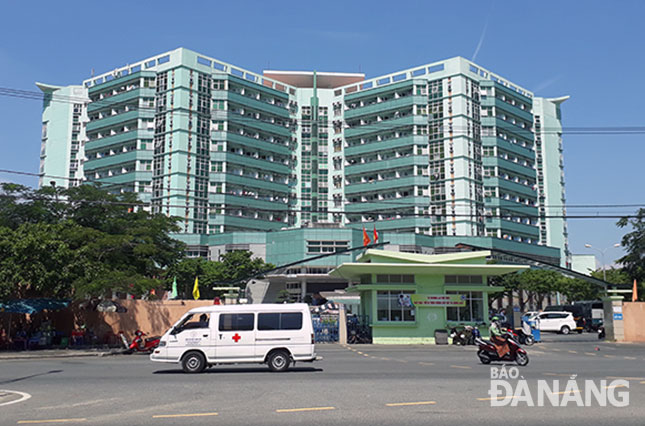Tremendous achievements from public investment
Da Nang was recognised as a national-level first-grade city in 2003, marking an important milestone in opening up new opportunities for the city to develop it into a political-economic hub and a driving force to boost the progress of the whole central region and Central Highlands.
 |
| The public-invested Han River Bridge is one of the city’s most notable symbols |
Over the past 15 years, top priority has given to developing urban infrastructure, education and health facilities, thereby creating tremendous changes to the city’s urban face.
In particular, the city’s great successes have been recorded in urban embellishment work with efficiency of investment projects funded by the State budget.
In 1998, only one year after Da Nang was recognised as a centrally-governed city on 1 January 1997, construction work began on public-invested Han River Bridge, the first of its kind in ASEAN at that time, and then, 29 March 2000 witnessed the opening of this project,
This bridge is one of the city’s most notable symbols and, even after 18 years, the bridge has still proved its high functionality, connecting downtown Hai Chau District with Son Tra and Ngu Hanh Son districts, and accelerating the progress of the eastern site of the city.
Following the success of the Han River Bridge, the city has seen more bridges showing off their special architectural characteristics spanning the river.
These are the nearly 1,000 billion VND (43.8 million US$) Thuan Phuoc Bridge - the longest suspension bridge in Viet Nam, over 1,700 billion VND (over 74.5million $) Tran Thi Ly Bridge, and the over 74.5million $billion Rong (Dragon) Bridge - the longest steel bridge in Viet Nam.
As for public investments in the educational and training sector, in the academic year 2003 – 2004, the new Le Quy Don High School for the Gifted was built on Le Van Dung Street in Son Tra District at a total cost of over 70 billion VND (over 3 million US$).
Since 2011, such auxiliary facilities as an 11-storey student dormitory, a gymnasium, and a swimming pool, totalling over 106 billion VND (4.6 million US$), have been constructed at this school.
With regard to the healthcare sector, opened in 2012 and designed to hold 600 beds, the 11-storey, over 10,000m2 Da Nang Maternity and Paediatrics Hospital can now accommodate a total of more than 1,650 patients.
 |
| The 11-storey, over 10,000m2 Da Nang Maternity and Paediatrics Hospital |
As of late last year, 2,171 streets have been built cross the city with a total length of 1,260km, an increase of 1,894 in the number of projects and 793m in length against 2003.
Notable amongst them are busy inner streets of Nguyen Van Linh, Pham Van Dong, Le Duan, Nguyen Tat Thanh, Truong Sa-Vo Nguyen Giap-Hoang Sa, Cach Mang Thang Tam, and Truong Chinh.
Through efficient public investment, 6 industrial parks (IPs), namely Da Nang, Hoa Khanh, Lien Chieu, Expanded Hoa Khanh, Hoa Cam and Da Nang Seafood Service, have been developed, whilst the construction of the city’s Hi-tech and IT parks is underway.
In a bid to enhance the spiritual lives of local inhabitants, a large number of cultural and sports facilities have been constructed. Included are the city’s General Science Library, the Museum of Da Nang, the Hoa Xuan Stadium, and the Children’s Cultural Palace.
To date, more than 300 new urban and residential areas in total have been established, and over 1,600 State-owned apartments have been offered to displaced families affected by the city's development projects, social policy beneficiaries, government employees who receive salaries from the state budget, and low-income earners.
Given the outstanding achievements mentioned above, Da Nang has been named as one of the best cities in Viet Nam in term of urban infrastructure.
Between 2003 and 2017, a total of 71,874 billion VND (over 3.1 billion US$) from the State budget was poured into local basic construction projects, representing an year-on-year growth of 14%.
In 2017 alone, 6,936 billion VND (over 304 million US$) worth of public investment has been disbursed, 7 times higher than in 2002.